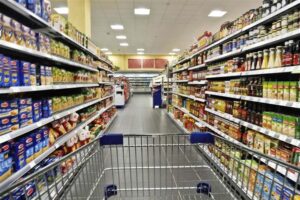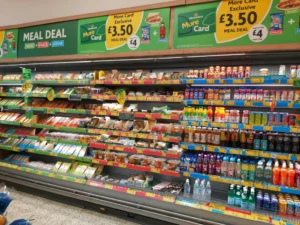How to Wash Fruit to Remove Pesticides (Safely and Effectively)
Washing your fruit before eating is something most of us do without much thought. But with rising concerns about pesticide residues, it’s important to understand how to clean your produce properly—without damaging it or introducing chemicals you don’t want to ingest. Here’s how to do it well.
1. Why Washing Fruit Matters
- Pesticide residues: Many fruits, especially those like apples, strawberries, and grapes, are sprayed multiple times during growth and storage. Non-organic strawberries often have numerous pesticide residues on their surface.
- Surface dirt and bacteria: While pesticides grab attention, soil bacteria or handling mistakes can also make produce unsafe.
- Fragrant waxes: Some fruits—apples, pears, citrus—are coated with wax to preserve freshness, which can trap chemicals underneath.
2. The Simple Tap Water Method
The most widely recommended approach by food safety experts is:
- Hold the produce under cold running water for at least 30 seconds.
- Rub the surface gently with your hands; use a clean vegetable brush for firmer fruits (apples, carrots, potatoes).
- Let delicate fruits (berries, grapes) sit in a colander and lightly swirl them under the tap.
- Pat dry with a clean cloth or paper towel to reduce moisture that encourages microbial growth.
This simple rinse removes 75–99% of surface pesticide residues, bacteria, and dirt.
3. Is Tap Water Enough?
- Water alone is highly effective and often outperforms commercial produce washes.
- Baking soda and vinegar soaks can remove additional pesticide residues. A baking soda soak for 12–15 minutes has been shown to eliminate over 96% of certain common pesticides from apples.
- That said, tap water rinsing performs nearly as well for everyday cleaning.
Bottom line: If you want extra peace of mind, a natural soak helps—but it’s not strictly necessary.
4. Step-by-Step Cleaning Routine
A) Wash Your Hands
Start by washing your hands with soap and warm water to avoid contaminating the produce.
B) Rinse Under Running Water
- Let cold tap water flow over the fruit for at least 30 seconds.
- Rub gently with your hands; a soft brush helps with firmer skins.
C) Optional Soaks for Extra Cleaning
- Baking soda soak
- Mix 1 tsp baking soda per 240 ml (1 cup) cold water.
- Soak fruit for 12–15 minutes.
- Rinse thoroughly under running water.
- Vinegar soak
- Mix 1 part white vinegar or apple cider vinegar with 3 parts water.
- Soak for 10–15 minutes, then rinse well to avoid taste transfer.
- Salt water soak
- Combine 2 tsp salt with 240 ml warm water.
- Soak for 10–15 minutes, then rinse.
D) Scrub When Needed
- Use a vegetable brush on apples, potatoes, citrus.
- Rub gently on softer skins like nectarines or peaches.
E) Dry Thoroughly
Use a clean towel or paper towel to pat dry. This reduces the chance of microbial growth.
F) Soften Dry or Store
- Wash fruit just before eating or cooking to maintain freshness.
- Soft fruits (berries, salad leaves) can spoil faster if pre-washed—rinse before use.
5. Special Considerations for Different Produce
- Berries: Rinse gently and quickly to avoid sogginess.
- Grapes: Cut into clusters and rinse individually for effectiveness.
- Citrus: Warm water soak helps melt off wax coatings.
- Leafy greens: Discard outer leaves, then soak for 2–3 minutes and rinse.
6. What You Should Not Use
- Dish soap, detergents, bleach: These can be absorbed into porous fruit skins—undesirable and potentially harmful.
- Commercial produce washes: Not proven to be more effective than water alone.
7. What About Organic Produce?
Organic items typically have lower pesticide residues, but they’re not entirely free. Handling, contamination in storage, or residual pesticides can still be present.
So: Treat them the same way—rinse or soak before eating.
8. Extra Tips & Hacks
- Peeling fruits like apples or pears can remove surface residue, but also strips away nutrient-rich skin.
- Ozonated water has shown pesticide reduction effects, but household ozone units remain niche and costly.
- Storing produce dry (after washing) in breathable containers helps maintain freshness and reduce bacterial growth.
Quick Clean-Wash Checklist
- Clean hands
- Wash/rinse under cold running water
- Optional soak: baking soda / vinegar / salt
- Scrub firmer produce
- Rinse thoroughly
- Dry before storing or serving
What Reddit Users Say
“Ozonated water decreased pesticide residues in peppers. Ozone could be an alternative treatment.”
“Using a 10 mg/mL NaHCO₃ washing solution helped degrade pesticides more effectively than bleach.”
“Special washes are not significantly better according to experts. Gentle rubbing and rinsing is enough.”
Final Verdict
- Tap water rinse + gentle rubbing is fast, safe, and removes most contaminants.
- Baking soda or vinegar soaks offer an extra layer of cleaning—useful for high-pesticide produce like apples and strawberries.
- Avoid soaps or harsh chemical cleaners—they’re unnecessary and potentially unsafe.
- Always wash produce just before eating, keep tools clean, store items dry, and enjoy your fruit with confidence!


